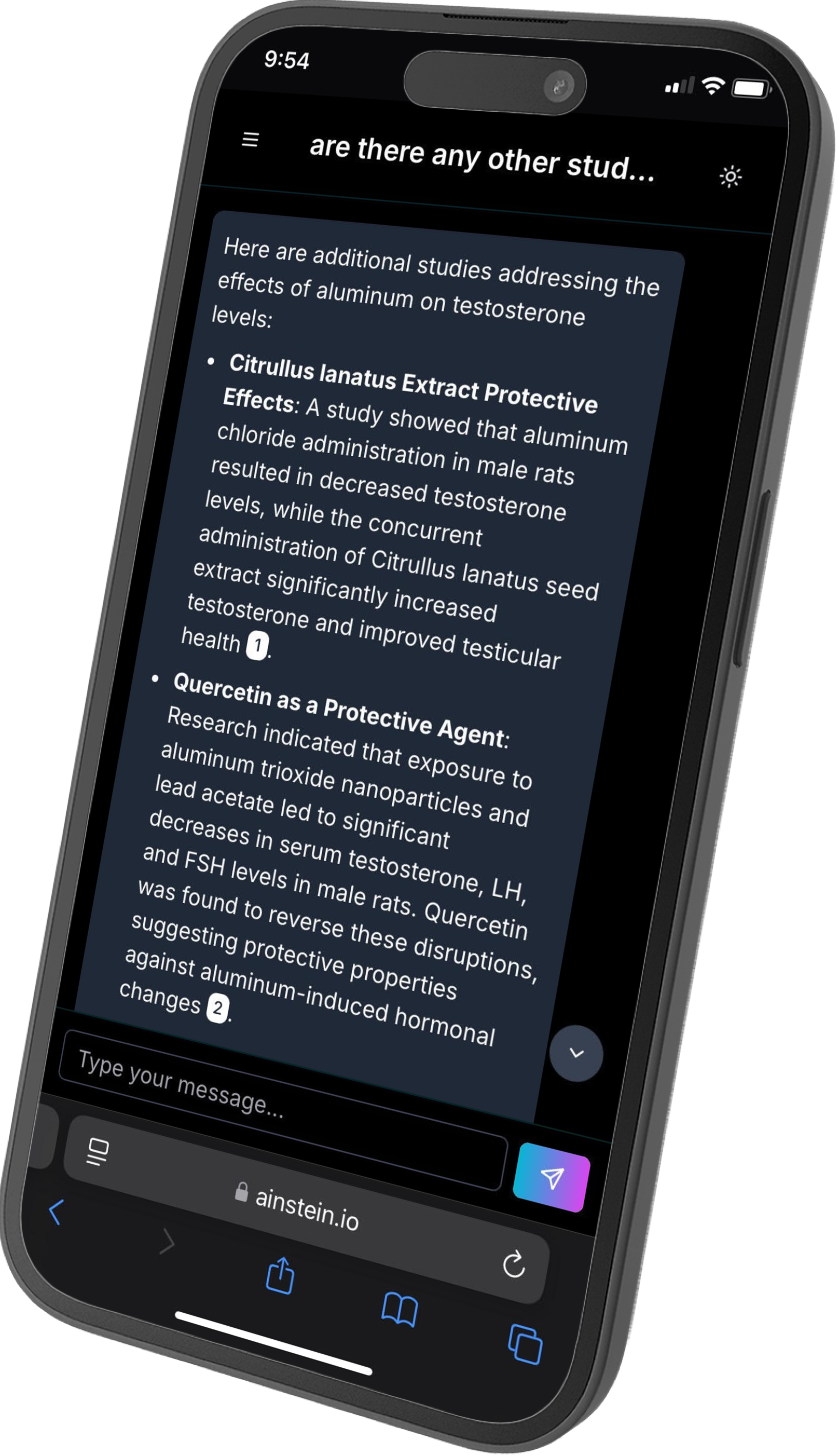[Features]
Research Dataset
AInstein is built on the Semantic Scholar Academic Graph (S2AG) API, providing access to over 200 million academic papers.
User Interface
AInstein boasts a sleek, performant, accessible user interface, built using shadcn/ui components.
Authentication
Users are given a limited number of unauthenticated messages, after which they are prompted to sign in using an OAuth 2.0 provider. Upon sign in, their previous messages are linked to the new account.
System Prompt
AInstein's system prompt was iteratively designed with an emphasis on reliable source citation. Using a RAG pipeline, the assistant retrieves relevant literature, citing each document with a unique identifier in its response.
[Key Challenges]
Prompt Engineering
Developing a reliable prompt for the gpt-4o-mini model (chosen due to cost constraints) required an iterative process spanning weeks of testing. Through careful wording, clear guidelines, and positive/negative examples, a prompt that sufficiently directs the model was created. The active prompt is customized on a user-to-user basis, based on their response length and format preferences.
Authentication
Similar to ChatGPT and other mainstream AI assistants, an authentication system that a) allows unauthenticated users to begin chatting without registration, and b) associates unauthenticated messages with an account upon creation, was necessary. The developed authentication system does just that, using OAuth 2.0 to securely handle sign-ins and registrations.
